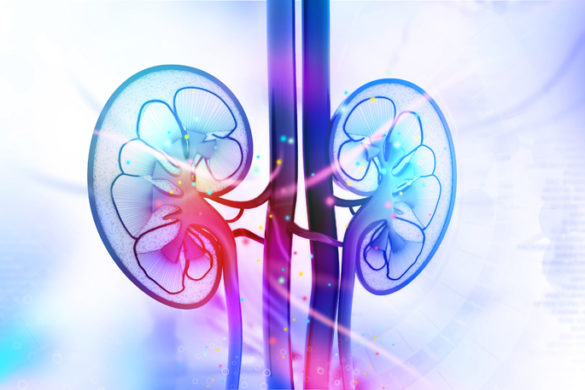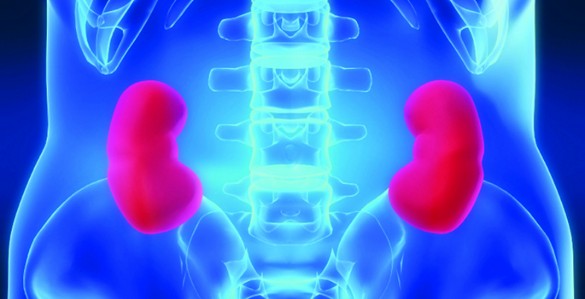
Kidney fibrosis — characterized by abnormal accumulation of the protein collagen — destroys kidney function. Fibrosis is the final result of all types of end-stage chronic kidney disease, which affects more than 20 million people in the United States.
“Unfortunately, kidney fibrosis is an irreversible event, and there is no treatment,” said Ambra Pozzi, Ph.D., professor of Medicine in the Division of Nephrology and Hypertension. “[rquote]If we can understand how the collagen is synthesized and degraded, we might be able to devise a tool to really treat, and ideally prevent, kidney fibrosis[/rquote],” she said.
In the Journal of Clinical Investigation, Pozzi and colleagues report that a novel “conversation” between a main collagen receptor and a growth factor receptor regulates fibrotic signaling in the kidney. The findings suggest a new strategy for reducing kidney fibrosis.
Pozzi and her team had previously implicated the collagen receptor — a protein called integrin alpha1/beta1 — in fibrotic signaling. They found that mice lacking integrin alpha1 developed more fibrosis in a kidney injury model than control mice, suggesting that integrin alpha1 normally “keeps the brakes” on fibrosis.
In the new paper, they connect integrin alpha1/beta1 to the type II TGF-beta receptor. The growth factor TGF-beta is a known contributor to kidney fibrosis and other pathological conditions, including inflammation and cancer.
The researchers found that a particular modification of the TGF-beta receptor II (tyrosine phosphorylation) regulates fibrotic signaling; higher levels of tyrosine phosphorylation increased kidney fibrosis.
This finding was unusual, Pozzi said, because most TGF-beta receptor research has focused on phosphorylation of serine and threonine, not tyrosine.
They found that integrin alpha1/beta1 reduces fibrotic signaling by reducing tyrosine phosphorylation of the TGF-beta receptor II, a novel form of “cross-talk” between these two receptors. It does this by recruiting and activating a tyrosine phosphatase protein (called TCPTP) that removes the phosphates from tyrosines on the TGF-beta receptor II.
The team demonstrated in a mouse model that activation of TCPTP with a non-selective compound reduced TGF-beta receptor II tyrosine phosphorylation and activity, and dampened the fibrotic response.
“We think that targeting the tyrosine phosphorylation of the TGF-beta receptor II, in particular by enhancing de-phosphorylation, might be a valid tool for treating situations where there is unwanted activation of the TGF-beta receptor in conditions like inflammation, cancer and especially fibrosis,” Pozzi said.
“My dream is to devise selective integrin alpha1/beta1 or TCPTP activators to try to really block and prevent the TGF-beta pro-fibrotic signaling response.”
First author Xiwu Chen, M.D., Ph.D., led the studies. Other Vanderbilt contributors included Hongtao Wang, Hong-Jun Liao, M.D., Wen Hu, Leslie Gewin, M.D., Glenda Mernaugh, Lorenzo Vega-Montoto, Ph.D., Roberto Vanacore, Ph.D., and Roy Zent, M.D., Ph.D.
The research was supported in part by Veterans Affairs Merit Review awards, a Veterans Affairs Career Development Award, grants from the National Institutes of Health (DK095761, DK075594, DK069221, DK083187, DK065123, DK099467) and an American Heart Association Established Investigator Award.
JCI featured Pozzi’s paper in a video abstract:















